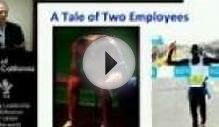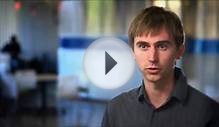
This guide will help you understand how MIT sequences its courses within each discipline and what courses MIT requires for a complete program of study. MIT OpenCourseWare provides this guide for informational purposes only. You cannot receive a degree, a certificate, or any kind of credit for your study of courses on OCW.
MIT is organized into five schools:
All together, there are over 30 degree-granting departments, programs, and divisions.
In addition, a great deal of research and education takes place in interdisciplinary programs, laboratories, and centers whose work extends beyond traditional departmental boundaries. Interdisciplinary education programs are offered at both the and the levels.
Undergraduate Education
MIT strives to provide students with a strong scientific, technical, and humanistic foundation, and to encourage them to develop creativity in defining problems and seeking solutions. For the Bachelor of Science degree, students must complete a core requirement that is equally divided between science and mathematics, and the humanities, arts, and social sciences. The science/mathematics requirement includes chemistry, biology, physics, and calculus, as well as laboratory and science electives. The humanities, arts, and social sciences requirement must be fulfilled by taking one course each in the humanities, arts, and social sciences, along with a three-subject concentration. Students must also complete a four-subject communications requirement.
MIT undergraduate General Institute Requirements include:
See the MIT Course Catalog for detailed information about General Institute Requirements and the Communication Requirement. Beyond these requirements, students must meet the standards of their chosen major(s). See the MIT Undergraduate Curriculum Requirements links in the tables below for specific information about each major.
A typical course load is four to five courses each term. Freshmen are subject to a credit limit of no more than five courses, as they adjust to the pace and intensity of an MIT education. Upperclassmen are free to take as many courses as they like, with their academic advisor's approval.
Office of Admissions
Massachusetts Institute of Technology
Room 10-100
77 Massachusetts Avenue
Cambridge, MA 02139
Phone: +1.617.253.3400
Graduate Education
Traditionally a leader in engineering graduate education, MIT has also attained national prominence for its doctoral programs in mathematics and the physical and life sciences. In addition, top-ranked graduate programs in economics; political science; linguistics; science, technology, and society; architecture; urban studies and planning; and management have broadened the spectrum of graduate education at MIT.
Graduate students may pursue any of the following degrees:
The Institute has a single faculty that is responsible for both undergraduate and graduate instruction. Each department exercises a large measure of autonomy for its graduate programs, under general guidelines established for the Institute as a whole. The administration of graduate education rests with the president, the provost, the chancellor, the dean and associate dean for graduate students, and the Committee on Graduate School Programs.
RELATED VIDEO




 Kim Eric Drexler (born April 25, 1955) is an American engineer best known for popularizing the potential of molecular nanotechnology (MNT), from the 1970s and 1980s. His 1991 doctoral thesis at Massachusetts Institute of Technology was revised and published as the...
Kim Eric Drexler (born April 25, 1955) is an American engineer best known for popularizing the potential of molecular nanotechnology (MNT), from the 1970s and 1980s. His 1991 doctoral thesis at Massachusetts Institute of Technology was revised and published as the...








